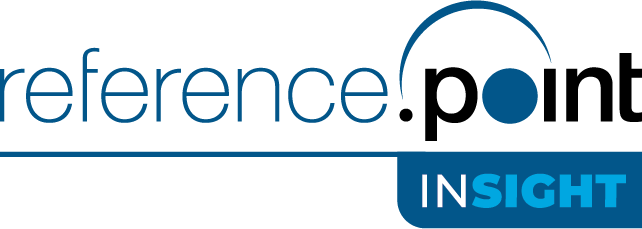
Digital Directions Considerations For Driving Front Office Digital Transformation in Wealth Management
March 2025
Straight To The Point
The world is changing dramatically in Wealth Management. Over the next two decades, parents and grandparents are expected to pass down trillions of dollars ($60 trillion, by one estimate) to the next generations — largely, Millennials and Gen Xers.
NEW CLIENTS, NEW DEMANDS
This transfer will drastically reshape the face of Wealth Management, as several trends play out:
- The new client segments are digital natives and have high digital expectations. 69% of them in a recent survey said they would transfer their assets and manage their money with Apple, Amazon or Google if they could (FA Financial Advisor, 2023).
- Incumbent wealth managers will lose clients and assets in the transfer. By some estimates, more than 80% of beneficiaries will fire their parents’ advisor upon inheriting, lured-away by more innovative firms and digitized experiences (Cerulli, 2022).
- Large banks are responding and investing heavily in digital transformation in efforts to meet the expectations of new audiences, especially the mass affluent market. At present, nearly a third of G2000 companies are spending ten percent or more of revenue on their digital strategies (Forbes, 2023).
- RIA assets and acquisition multiples have been rising fast at 12 percent annual growth in assets since 2016 (RIA News, 2022). This will likely fuel acquisitions once valuations normalize. At present, there’s a drain of advisors, clients and assets from incumbents.
- With 43% of US Financial Advisors aged 55 or over, approximately one third of the workforce is set to retire in the next 10 years, dissolving many long-term Wealth Management relationships (Cerulli, 2022).
- Wealth managers are struggling to replace retiring advisors with new recruits, where the workforce looks different and compensation models are in conflict with desires.
FRONT OFFICE FOCUS
It is clear that wealth managers must put their focus on the greatest potential sources of net new assets they have; their own clients and the advisors that earn additional assets through their relationships and service. Advisors play a massive role in this context and are the most important leverage point for the firm. Doing it right means focusing on the advisor practice model and delivering capabilities that expand advice, guidance, solutions and a digital experience that resonates with new client segments. Digital is also critical for automating processes so that the advisor may service greater numbers of clients and assets with existing resources; a key for profitable organic growth.
SO, WHAT THEN?
What are the definitive trends in front office digital transformation?
 Client Onboarding
Client Onboarding
As much as 20% of a FA’s day can be spent opening, maintaining or closing client accounts and it usually tops the list of inefficiency for many firms (Reference Point, 2023). While some firms have shaved the time it takes to open and fund a new account to near instantaneous, many still struggle with a process that can take days or even weeks due to manual activities and the amount of personal and legal data required for client due diligence and KYC. Onboarding is also typically one of the first interactions a new client will have with a firm and certainly one of the more intense, so the price can be high if the experience doesn’t go smoothly. Getting this process right is a top priority for advisors, with 95% in a recent study indicating more automation is required (Unblu, 2022).
The good news is that there are multiple workflow-oriented software packages out there that are well-proven in wealth management and are much cheaper and more effective than building the capability yourself (often an effort severely under scoped and budgeted). What's more, AI-enhanced functionalities are taking an ever-increasing role in speeding-up the process and alleviating advisor burden. Getting this one right improves client experience and reduces costs and is usually top of the list for capabilities investment and the investment usually pays for itself in less than 18 months (Reference Point, 2023).
Robo and Hybrid Balance
Once we got past the basics of rebalancing, robo models evolved quickly but pure models weren't embraced. A recent survey found 54% of 18–25-year-olds losing faith in pure robo models (Unblu, 2023). Most clients still want human-centric interactions especially in times of volatility, so it's important that these channels can co-exist together based on client preferences. A balanced hybrid model is critical. Tasks that clients are all too ready for advisors to automate include reporting, education, research and monitoring where the increased adoption of AI can increasingly robo these activities for clients. Human interaction is still the desired channel for financial planning, portfolio construction and ad hoc decision-making. Robos still only account for a fairly small proportion of total assets under management which underlines the need for a balanced hybrid model.
Next Best Action
Advancements have been dramatic in life stage wealth level advice models where relevant “best interest” advice actions are gathered from crunching client and transaction data using analytics and AI tools. Referred to as “Next Best Action”, the idea is to try to predict what the client will be interested in next and suggest the advisor reach out to the client with it. Other “money-in-motion” events could be identified (e.g., retirement rollovers, equity compensation) and the advisor notified as well. The collaborative filtering required from an AI standpoint isn’t that difficult to do and it’s always up to the advisor on whether to action the advice. Practically, NBA doesn’t appear to be as valuable a tool for top producers who comment that they “knew that already” but most likely has some utility for less-client-engaged advisors.
Financial Planning & Goals-based Investing (GBI)
Aligning products and services to the short, medium and long-term goals of clients becomes an important capability in the lower HNWI and mass affluent segments and goal-based investing a principal stratagem. It can be a complex exercise if the front office isn't doing it now and financial planning skills are a frequent gap in newer FAs. GBI makes it even more complex of course, where progress must be measured towards specific life goals, such as saving for children's education or building a retirement nest-egg, rather than focusing on generating the highest possible portfolio return. From a digital capabilities' standpoint, the Financial Planning tool must support the approach and most players white-label existing packages like NaviPlan for example to do so.
Portfolio Management and Rebalancing
More complex is the need to segment the client’s portfolio into distinct subsets, each managed separately using a unique investment strategy. This approach allows the tailoring of investment strategies to the specific needs and goals of each sleeve. Moving from traditional portfolio management to sleeves can be a big change for wealth managers and requires a more sophisticated portfolio management capability. GBI reporting is also something wealth managers often wrestle with and how to best show progress towards the client’s individual goals, but can be more straightforward when the sleeves problem is solved.
Portfolio monitoring, alerts and rebalancing are digital capabilities that improve advisor and/or investor efficiency by automating and streamlining the process to oversee the portfolio. Monitoring and alerts are usually part or a larger more platform-wide effort to build event capture and notification hubs to expand this capability into other areas of the platform. Not that long ago, clients met advisors over lunch and coffee to do their reviews and while much of that interaction now takes place online, clients still desire the human interaction, maybe even more than before.
Client Interaction Tools
Integrating popular third-party applications like WhatsApp or Teams into secure messaging environments can help increase client interactions and engagement. Video chat has also become more adopted as 50% of investors have said they are comfortable receiving financial advice that way, doubling since 2019 (Cerulli, 2022)
Other Advisor Productivity Tools
Tools that simplify and streamline advisor tasks to free-up time and enable role-repurposing all go towards the goal of alleviating FA service burden. AI-enabled requests for information using tools like OpenAI to help FA’s navigate huge libraries of research and data resources. BloombergGPT is another example where AI will assess whether headlines are bearish or bullish for investors, and write headlines based on a short blurb.
Advisor Individual and Team Coaching
Tools like Microsoft VIVA take activity feeds from applications such as email, messengers and video calls and provide personal interaction analytics such as how much time you spent with so-and-so this week. There’s a big idea waiting here to marry that capability with a more sophisticated AI-enabled comparison engine to compare that activity to a “model producer” and see where the differences are, in turn using the information to coach the advisor, their team and even provide practice insights to complex and branch managers. This is likely the next shoe to drop in wealth management where AI is concerned and represents a powerful new capability for coaching advisor teams into higher accretive quartiles.
Advisor Sunset Plans
AI is faster than humans are looking at data and drawing insight and what if a capability could predict when an advisor might be thinking of leaving? It’s in the firm’s interests to try to prevent the leaving of the advisor’s clients and assets so identifying flight risks could help drive those preventative activities. When FAs are nearing the end of their working careers, activities could focus on transition plans where book buyouts or production splits could help retain assets.
 PARTING THOUGHTS
PARTING THOUGHTS
Only 16% of firms think their digital transformations have successfully and sustainably improved performance (Unblu, 2022). Some thoughts for the road:
- The CEO needs to be deeply involved; buy-in is never optional and executive support cane wane over time.
- Big programs will break so expect problems. 98% of them run at least 30% over budget and 40% late (Standish Group, 2022).
- Excessive project management will slow them down even more with “unnatural bureaucracy.”
- Innovation S Curves (~18 months) move faster than program timelines.
- Quality, relevance and availability of data are gating factors to what can be done.
- Large programs need their own “HR function” that manages not just employees but vendor personnel and performance.
The world is indeed changing for wealth managers and whichever direction it continues to evolve, digital innovation will be a core lever for achieving profitable growth amongst a new generation of clients. If you have questions, please contact: startegy@referencepoint.com.
Table of Contents
About Reference Point
Reference Point is a strategy, management, and technology consulting firm focused on delivering impactful solutions for the financial services industry. We combine proven experience and practical experience in a unique consulting model to give clients superior quality and superior value. Our engagements are led by former industry executives, supported by top-tier consultants. We partner with our clients to assess challenges and opportunities, create practical strategies, and implement new solutions to drive measurable value for them and their organizations.